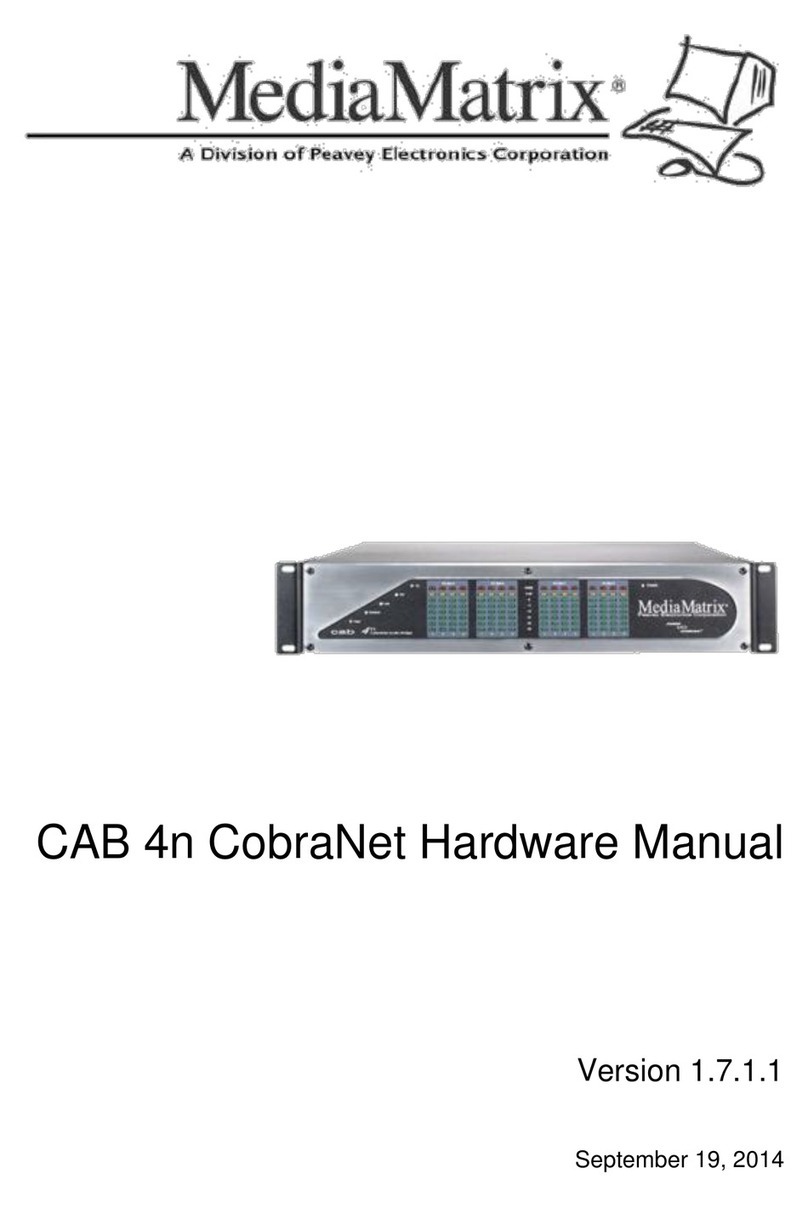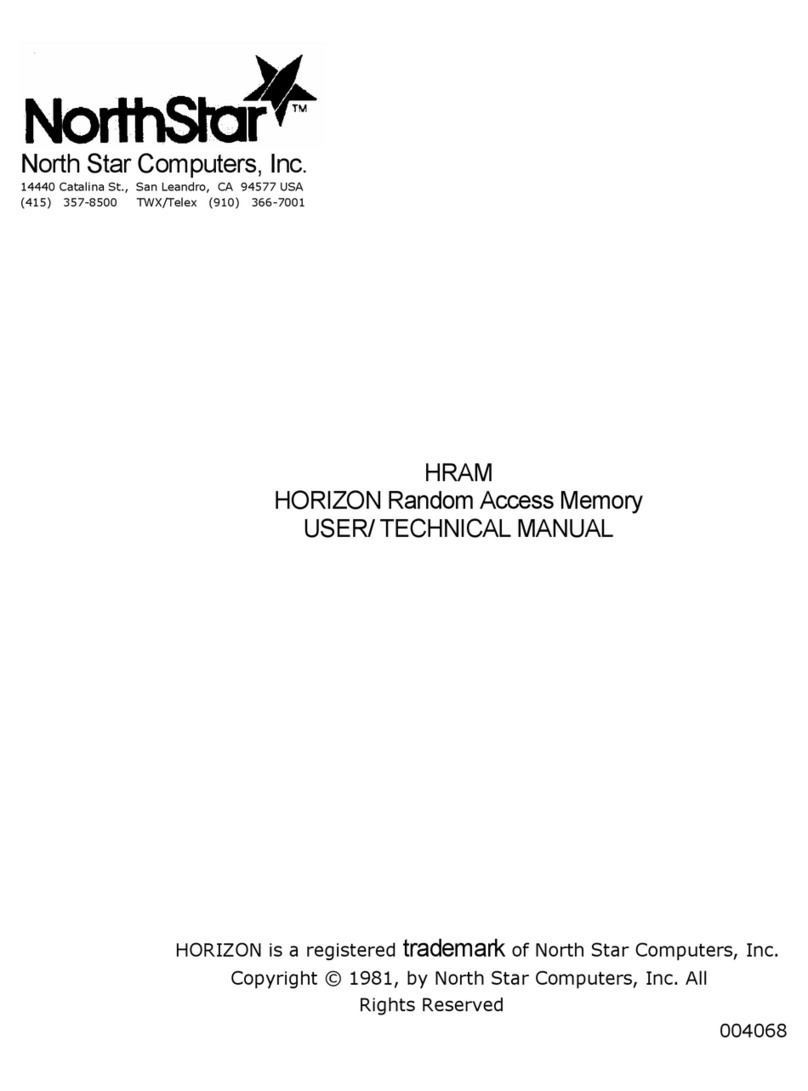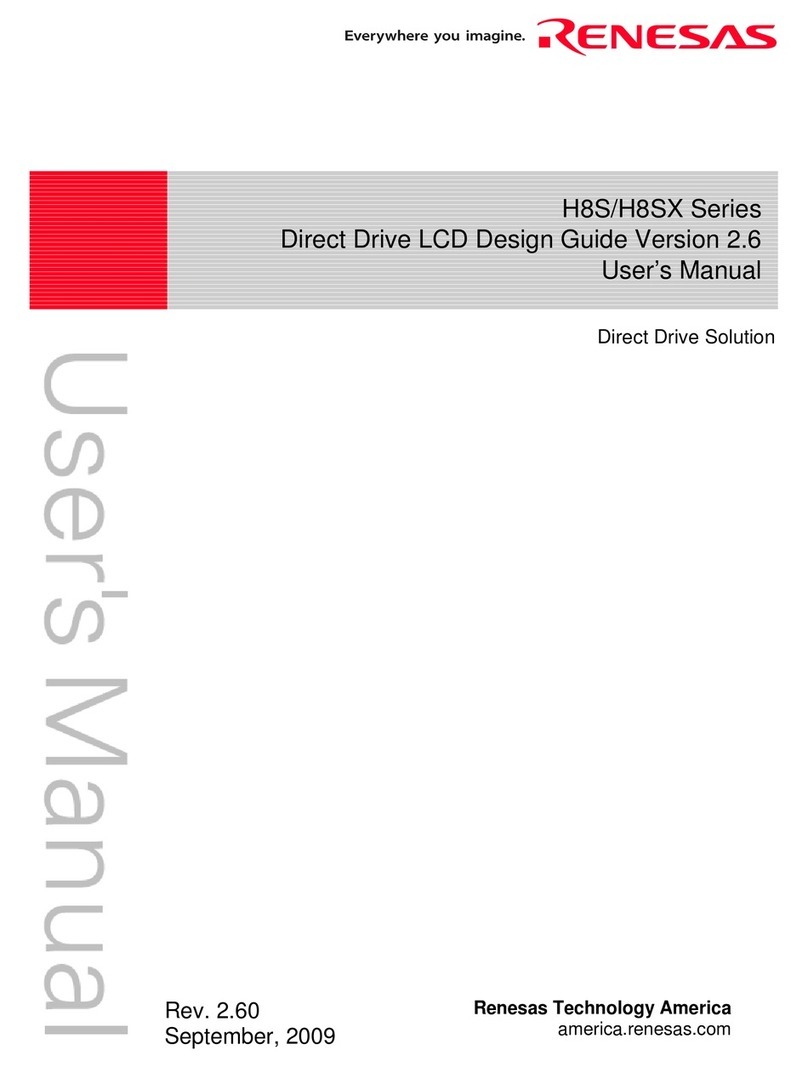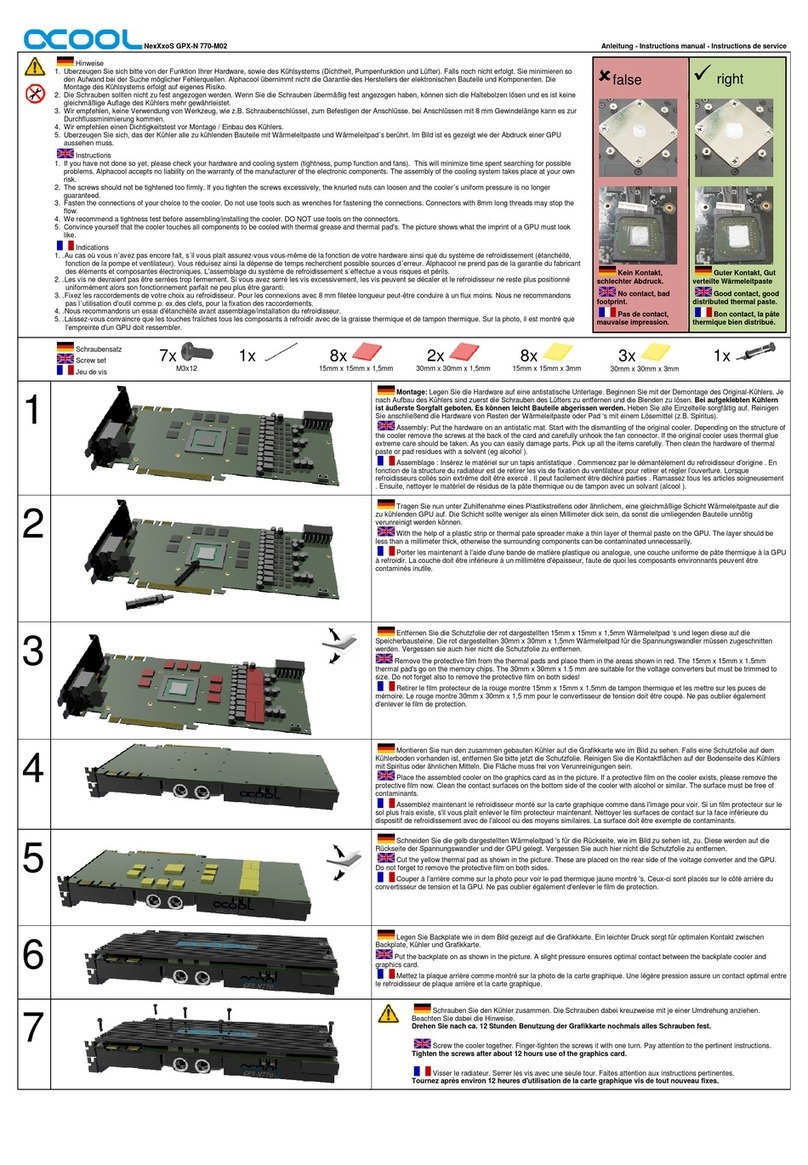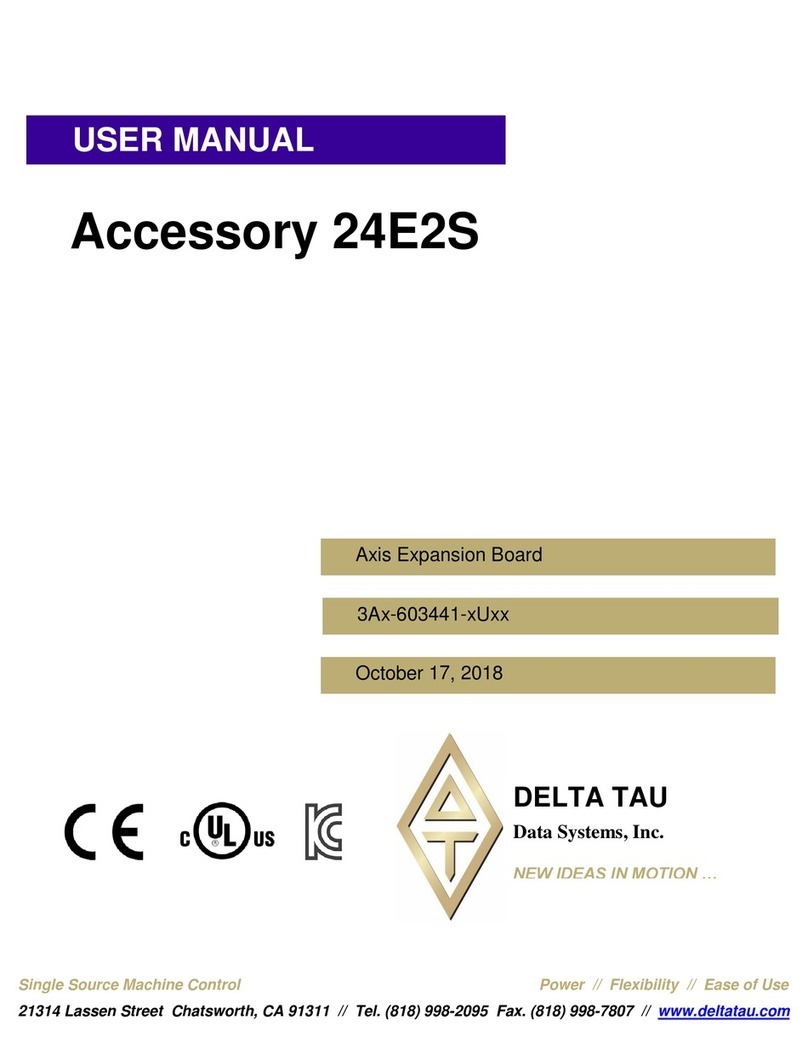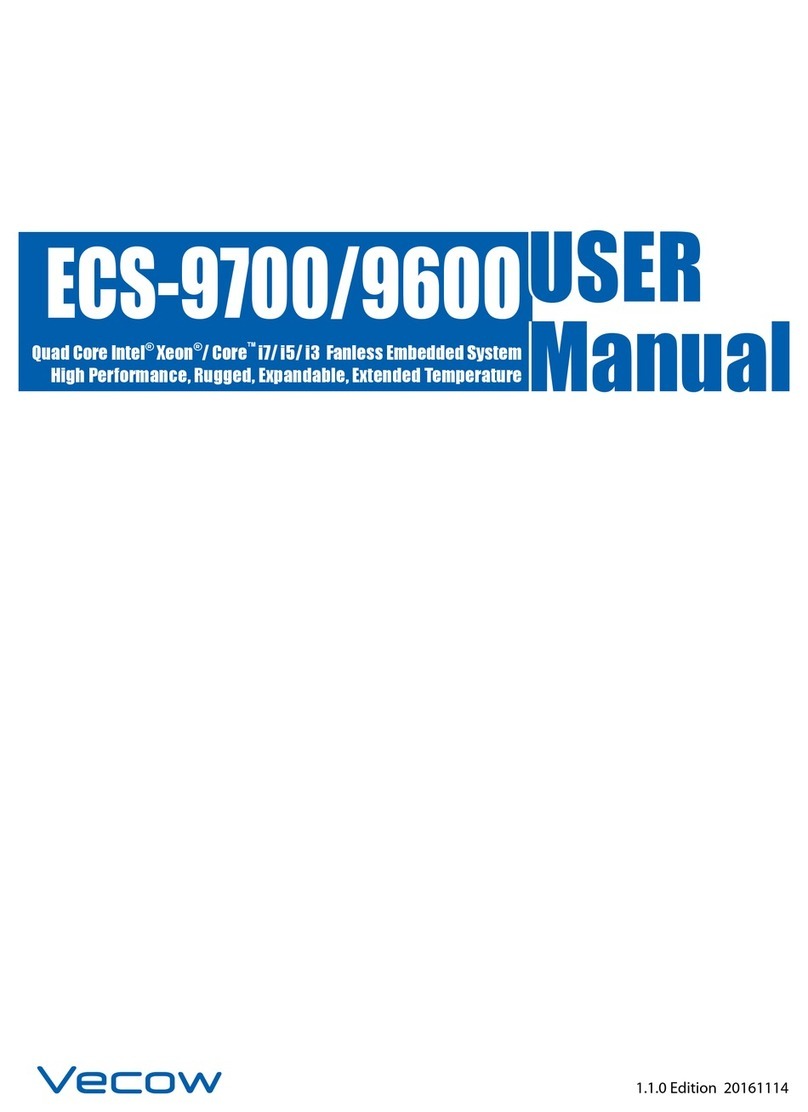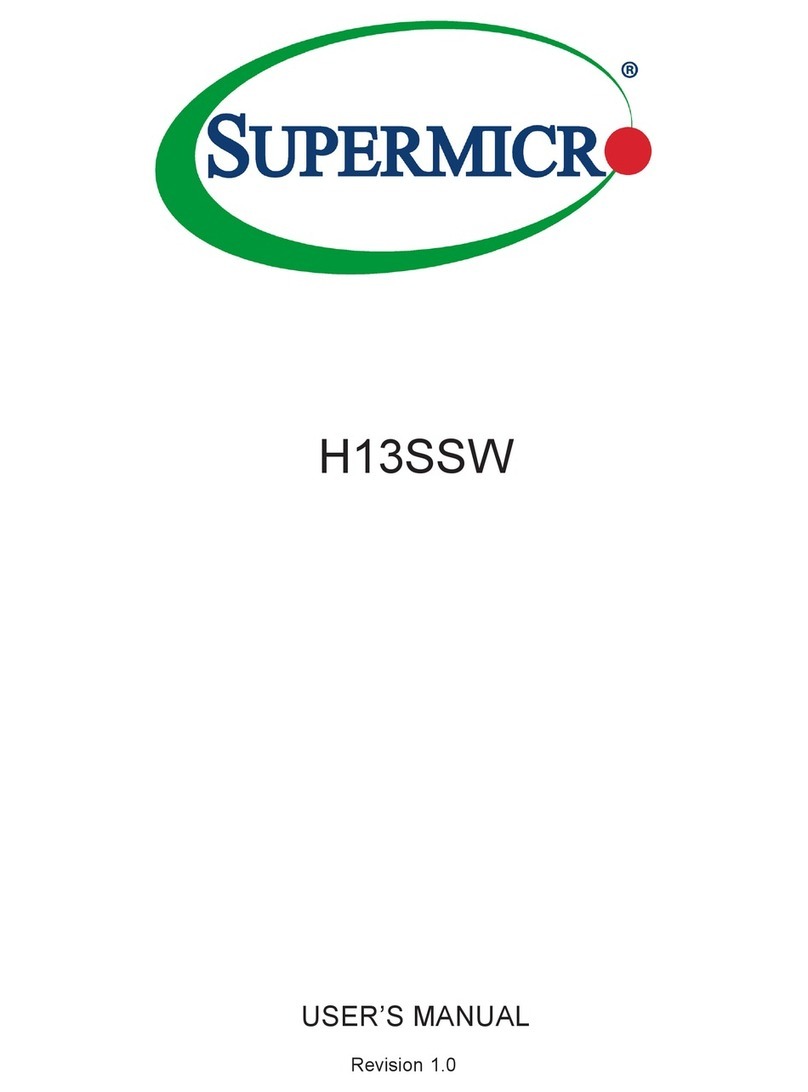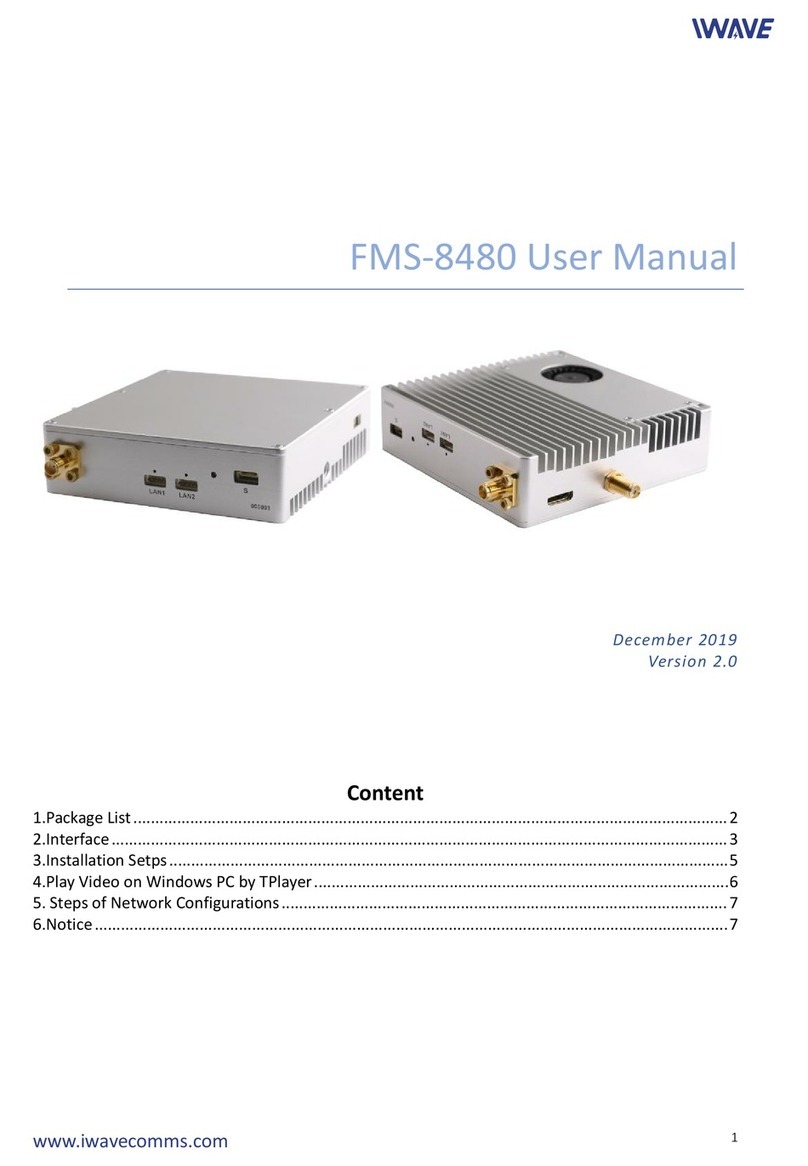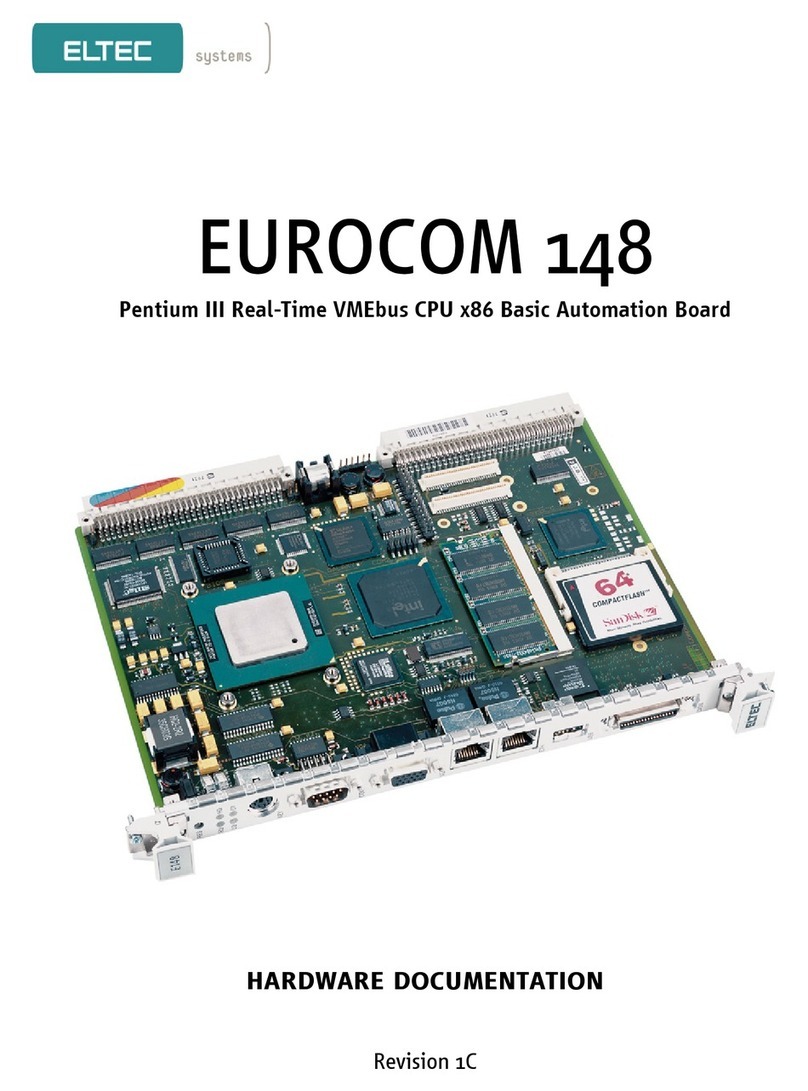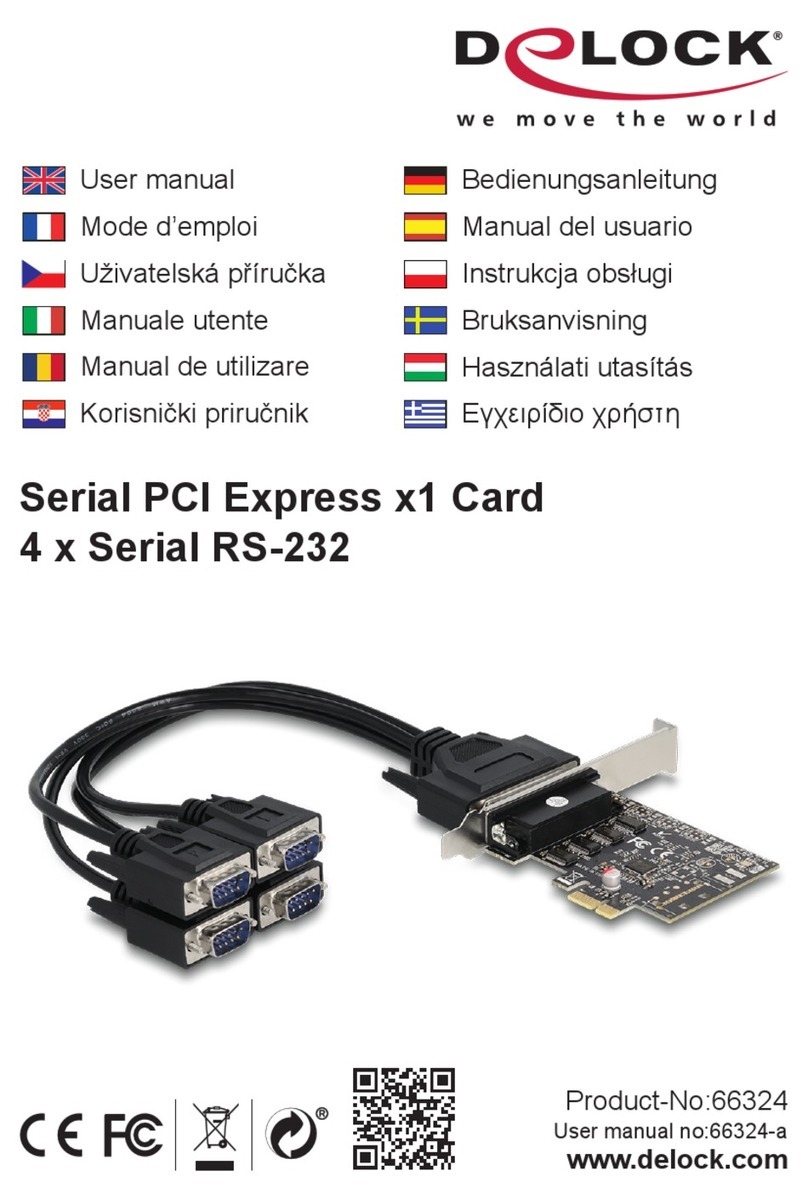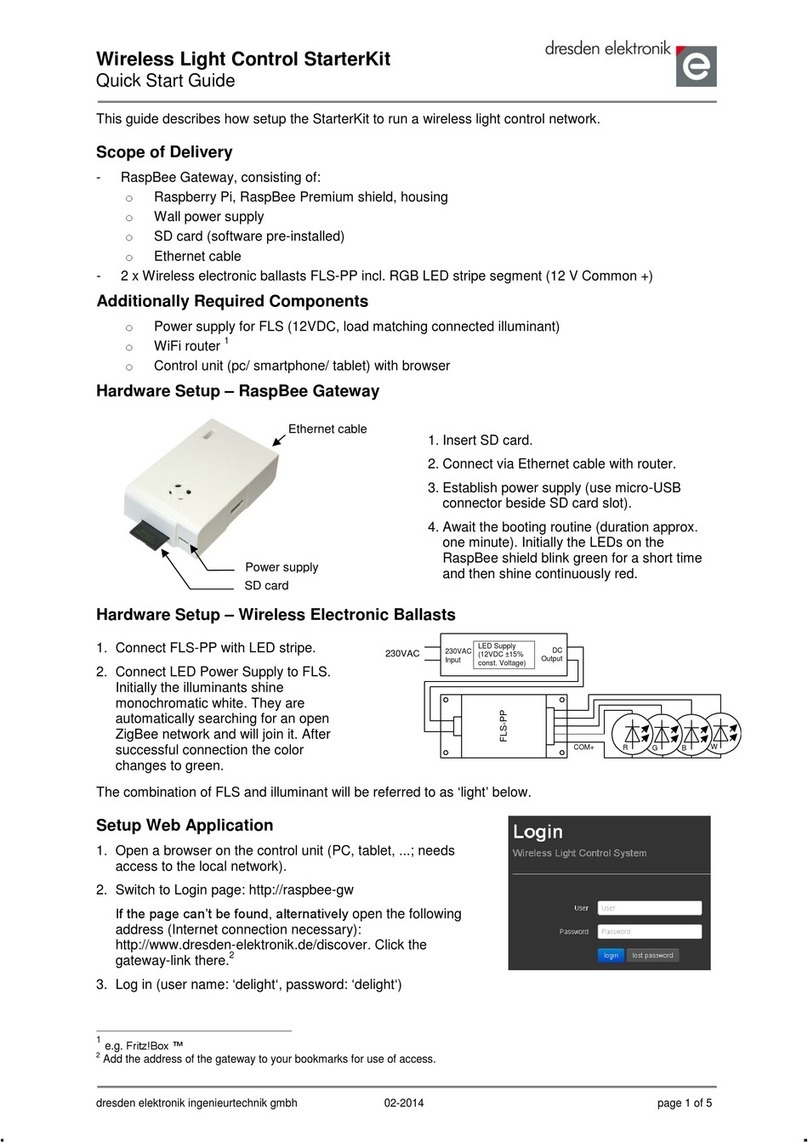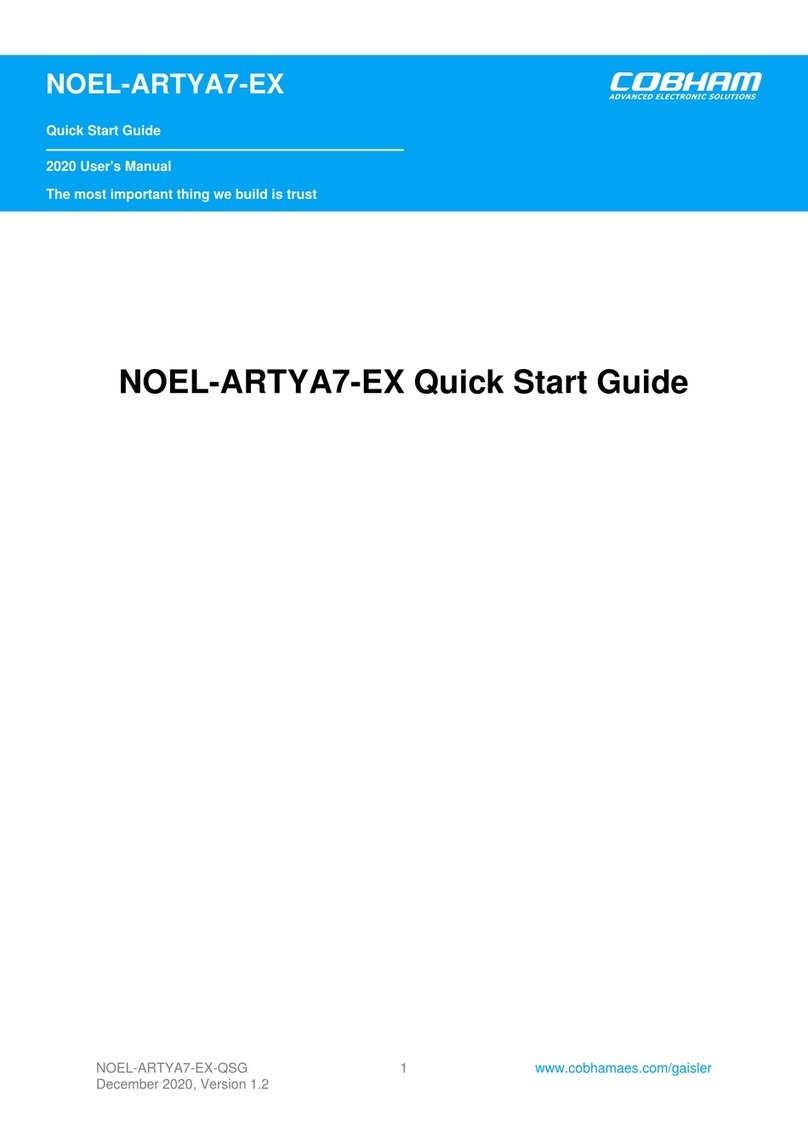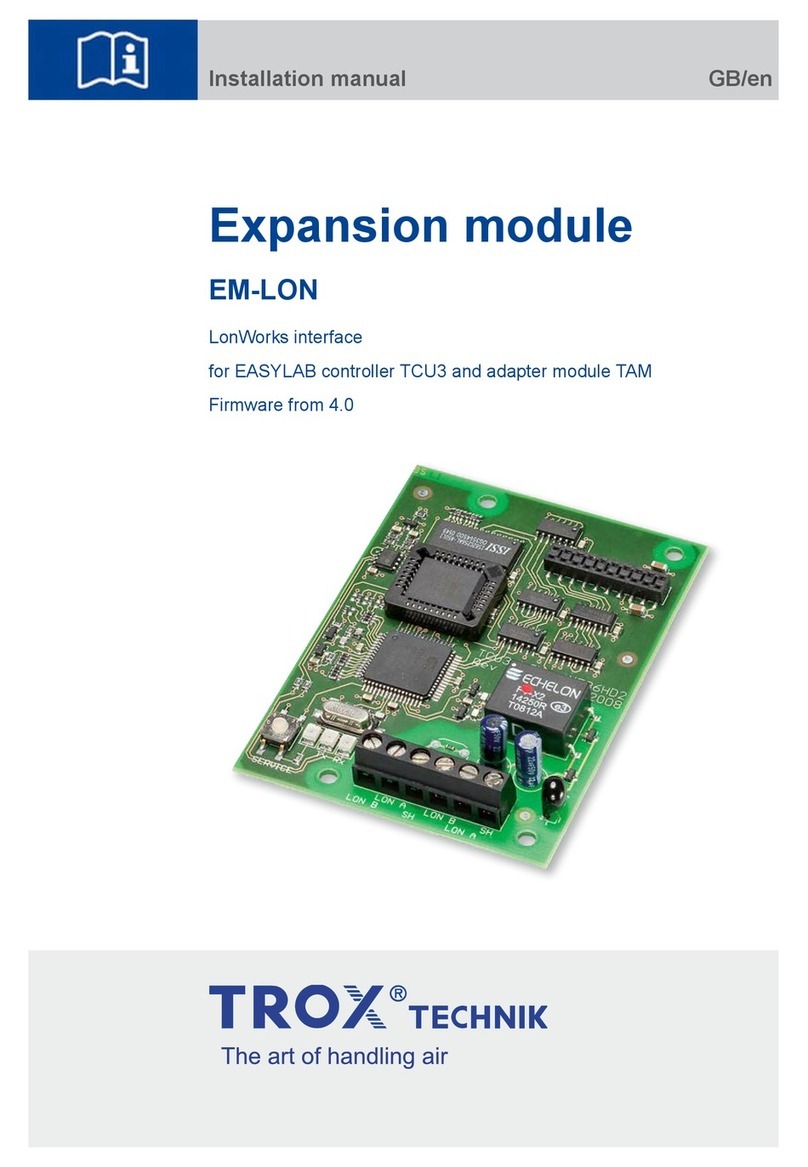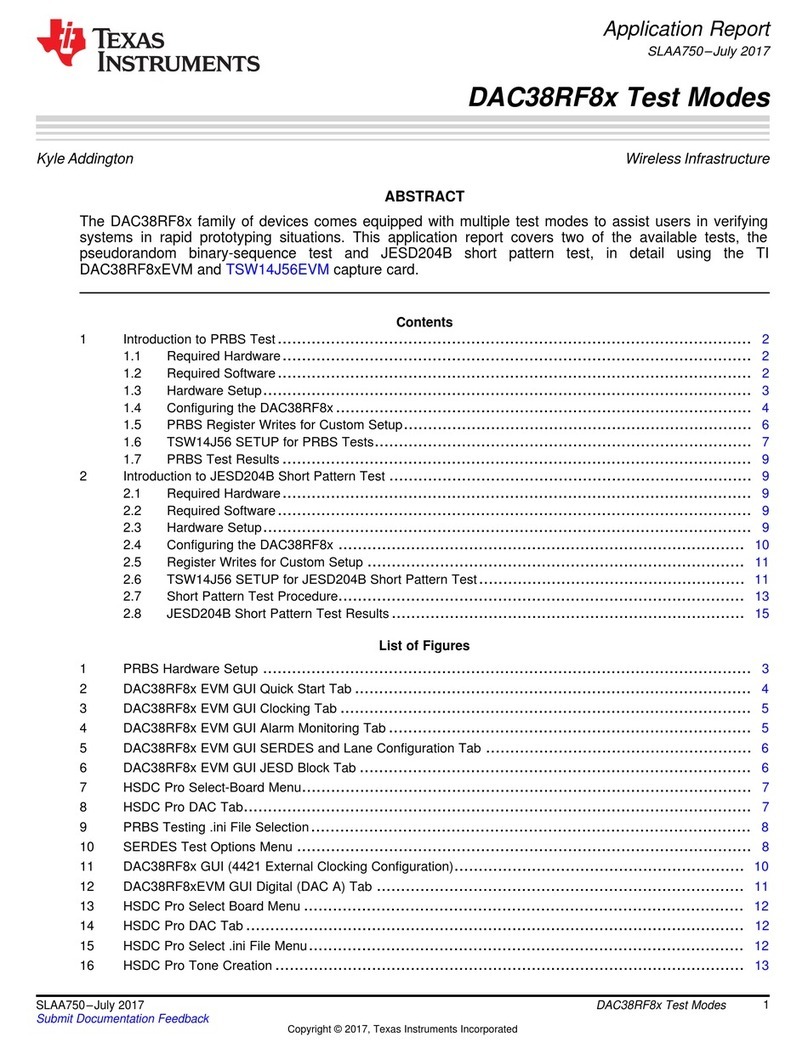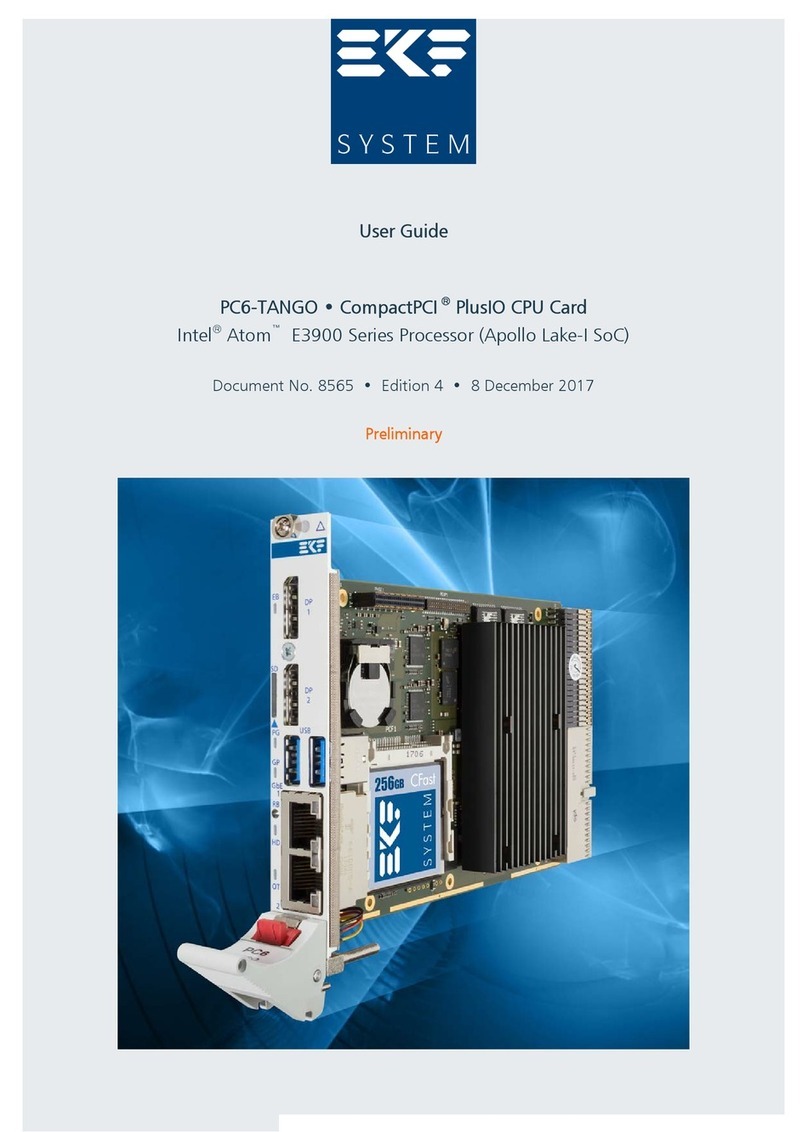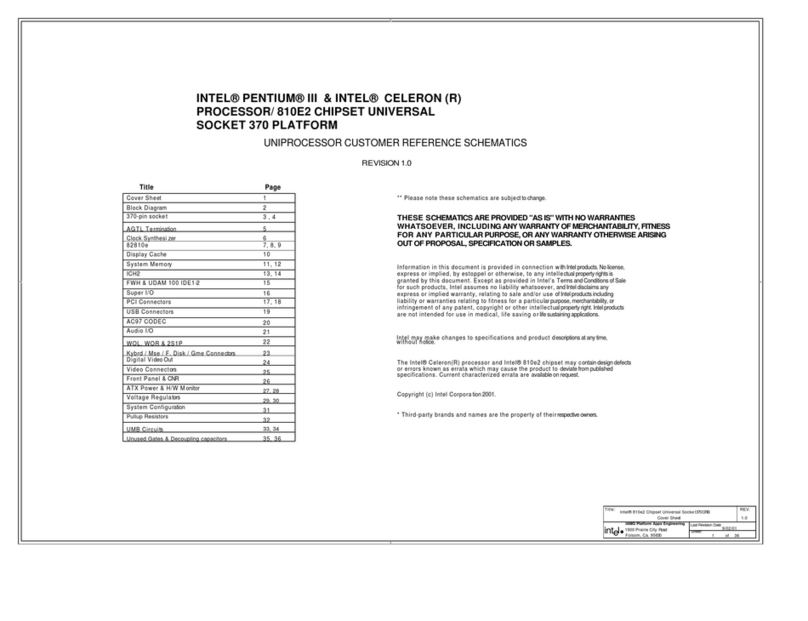Digital Voice Systems AMBE-20X0 HDK User manual

AMBE-20x0™-HDK
Development Board
Version 2.3
07, September
User’s Manual
Preliminary
Digital Voice Systems, Inc.
The Speech Compression Specialists

AMBE-20x0™-HDK Development Board
User’s Manual
Version 2.3
07, September
Copyright, 2007
Digital Voice Systems, Inc
234 Littleton Road
Westford, MA 01886
This document may not, in whole or in part be copied, photocopied, reproduced, translated, or reduced
to any electronic medium or machine readable form without prior consent in writing from Digital Voice
Systems, Incorporated.
Every effort has been made to ensure the accuracy of this manual. However, Digital Voice Systems,
Inc. makes no warranties with respect to the documentation and disclaims any implied warranties of
merchantability and fitness for a particular purpose. Digital Voice Systems, Inc. shall not be liable for
any errors or for incidental or consequential damages in connection with the furnishing, performance, or
use of this manual or the examples herein. The information in this document is subject to change
without notice.
Trademarks
AMBE-20x0™-HDK Development Board and AMBE-2000™ Vocoder Chip, AMBE-2020™ Vocoder Chip
are trademarks of Digital Voice Systems, Inc. AMBE® is a registered trademark of Digital Voice
Systems, Inc. Other product names mentioned may be trademarks or registered trademarks of their
respective companies and are the sole property of their respective manufacturers.
All Rights Reserved
Data subject to change

AMBE-20X0™-HDK Development Board
User’s Manual (Preliminary) Information – Section
AMBE-20x0™-HDK Development Board END USER License Agreement
*** Important Read Carefully ***
This end user license agreement is a legal agreement between the customer (the END USER) and Digital Voice Systems, Inc.
(DVSI) covering the terms and conditions under which DVSI's proprietary software, documentation and other material which may
be provided with the AMBE-20x0™-HDK Development Board is licensed to the END USER.
1.0 Preliminary Statements and Definitions
1.1 “END USER” shall mean the person and/or organization to whom the AMBE-
2000™ Vocoder Chip and/or AMBE-20x0™-HDK Development Board was
delivered or provided to as specified in the purchase order or other
documentation. In the event that the END USER transfers his rights under this
license to a third party as specified in section 2.2, then this third party shall
become an “END USER”.
1.2 Digital Voice Systems, Inc. (DVSI) has developed a voice coding method and
algorithm (the “Technology”) based on the Advanced Multi-Band Excitation
(“AMBE”) voice coder. The technology codes speech at bit rates of 2.4 to 9.6
kilobits per second (kbps) including error correction bits.
1.3 "AMBEVoice Compression Software" shall mean the speech coding
software and/or firmware integrated into the AMBE-2000™ Vocoder chip
integrated circuit.
1.4 "Voice Codec" shall mean the AMBE-2000™ Vocoder Chip integrated circuit,
the AMBEVoice Compression Software, firmware and associated
documentation, including modifications, enhancements and extensions made by
or for Digital Voice Systems, Inc. (DVSI) and including circuit diagrams, timing
diagrams, logic diagrams, layouts, operating instructions and user manuals.
1.5 DVSI represents that it owns certain “Proprietary Rights” in the Technology
and the AMBEVoice Compression Software, including patent rights in the
Technology, and patent rights, copyrights, and trade secrets in the AMBE
Voice Compression Software.
2.0 License Granted
2.1 Subject to the conditions herein and upon initial use of the AMBE-2000™
Vocoder Chip and/or AMBE-20x0™-HDK Development Board, DVSI hereby
grants to END USER a non-exclusive, limited license to use the AMBE® Voice
Compression Software in machine readable form solely on the AMBE-2000™
Vocoder Chip. Title to the AMBE® Voice Compression Software remains with
DVSI. No license is granted for use of the AMBE® Voice Compression Software
on other than the AMBE-2000™ Vocoder Chip. No license, right or interest in
any trademark, trade name or service mark of DVSI is granted under this
Agreement.
2.2 END USER shall not copy, extract, de-compile, reverse engineer or
disassemble the AMBE® Voice Compression Software contained in the AMBE-
2000™ Vocoder Chip.
3.0 Transfer of License
3.1 The END USER shall have the right to transfer the AMBE-2000™ Vocoder
Chip and/or AMBE-20x0™-HDK Development Board and all rights under this
Agreement to a third party by either (i) providing the third party with a copy of
this Agreement or (ii) providing the third party with an agreement written by the
END USER ( hereinafter “END USER Agreement”) so long as the END USER
Agreement is approved in writing by DVSI prior to transfer of the AMBE-2000™
Vocoder Chip and/or AMBE-20x0™-HDK Development Board. The END USER
Agreement shall contain comparable provisions to those contained herein for
protecting the Proprietary Information from disclosure by such third party. Third
parties shall agree to accept all the terms and conditions under either Agreement
or the END USER Agreement.
4.0 Term and Termination
4.1 This Agreement is effective upon initial delivery of the Voice Codec and shall
remain in effect until terminated in accordance with this agreement.
4.2 This Agreement shall terminate automatically without notice from DVSI if
END USER fails to comply with any of the material terms and conditions herein.
END USER may terminate this Agreement at any time upon written notice to
DVSI certifying that END USER has complied with the provisions of Section 3.3.
4.3 Upon termination of this Agreement for any reason, END USER shall: (i)
return all AMBE-2000™ Vocoder Chips and/or AMBE-20x0™-HDK Development
Boards purchased or acquired, or in Licensee’s possession, to DVSI; (ii) have no
further rights to any AMBE® Voice Compression Software or the Technology
without a separate written license from DVSI; (iii) discontinue all use of the
AMBE-2000™ Vocoder Chips and/or AMBE-20x0™-HDK Development Boards;
5.0 Payments
5.1 In consideration of the materials of the AMBE-20x0™-HDK Development
Board, and in consideration of the license and rights in the AMBEVoice
Compression Software granted by DVSI, and in consideration of DVSI's
performance of its obligations hereunder, END USER agrees to pay to DVSI the
fee specified in DVSI's invoice.
6.0 Proprietary Notices
6.1 END USER shall not remove any copyright or proprietary notice on the
AMBE-2000™ Vocoder Chip or on the AMBEVoice Compression Software
and/or AMBE-20x0™-HDK Development Board.
7.0 Proprietary Information
7.1 The parties agree that the AMBEVoice Compression Software and/or AMBE-
20x0™-HDK Development Board shall be considered Proprietary Information.
7.2 Except as otherwise provided in this Agreement, END USER shall not use, disclose,
make, or have made any copies of the Proprietary Information, in whole or in part,
without the prior written consent of DVSI.
8.0 Limited Warranty
8.1 DVSI warrants the AMBE-20x0™-HDK Development Board to be free from defects
in materials and workmanship under normal use for a period of ninety (90) days from
the date of delivery.
8.2 Except as stated in Section 7.1, the AMBE-20x0™-HDK Development Board is
provided "as is" without warranty of any kind. DVSI does not warrant, guarantee or
make any representations regarding the use, or the results of the use, of the Voice
Codec with respect to its correctness, accuracy, reliability, correctness or otherwise.
The entire risk as to the results and performance of the Voice Codec and/or AMBE-
20x0™-HDK Development Board is assumed by the END USER. After expiration of the
warranty period, END USER, and not DVSI or its employees, assumes the entire cost of
any servicing, repair, replacement, or correction of the Voice Codec and/or AMBE-
20x0™-HDK Development Board.
8.3 DVSI represents that, to the best of its knowledge, it has the right to enter into this
Agreement and to grant a license to use the AMBEVoice Compression Software
and/or AMBE-20x0™-HDK Development Board to END USER.
8.4 Except as specifically set forth in this Section 7.0, DVSI makes no express or
implied warranties including, without limitation, the warranties of merchantability or
fitness for a particular purpose or arising from a course of dealing, usage or trade
practice, with respect to the Voice Codec and/or AMBE-20x0™-HDK Development
Board. Some states do not allow the exclusion of implied warranties, so the above
exclusion may not apply to END USER. No oral or written information or advice given
by DVSI or its employees shall create a warranty or in any way increase, the scope of
this warranty and END USER may not rely on any such information or advice. The
limited warranties under this section 7.0 give END USER specific legal rights, and END
USER may have other rights that vary from state to state.
9.0 Limitation of Liability
9.1 In no event shall DVSI be liable for any special, incidental, indirect or consequential
damages resulting from the use or performance of the Voice Codec and/or AMBE-
20x0™-HDK Development Board whether based on an action in contract, tort (including
negligence) or otherwise (including, without limitation, damages for loss of business
profits, business interruption, and loss of business information), even if DVSI or any
DVSI representative has been advised of the possibility of such damages.
9.2 Because some states do not allow the exclusion or limitation of liability for
consequential or incidental damages, the above limitations may not apply to END
USER.
9.3 DVSI's maximum liability for damages arising under this Agreement shall be limited
to 20% (twenty percent) of the fees paid by END USER for the particular Voice Codec
and/or AMBE-20x0™-HDK Development Board which caused the damages or that is
the subject matter of, or is directly related to, the cause of action.
10.0 Taxes
10.1 All payments required under Section 4.0 or otherwise under this Agreement are
exclusive of taxes and END USER agrees to bear and be responsible for the payment
of all such taxes (except for taxes based upon DVSI's income) including, but not limited
to, all sales, use, rental receipt, personal property or other taxes which may be levied or
assessed in connection with this Agreement.
11.0 Export
11.1 United States export laws and regulations prohibit the exportation of certain
products or technical data received from DVSI under this Agreement to certain
countries except under a special validated license. As of November 30, 1999 the
restricted countries are: Libya, Cuba, North Korea, Iraq, Serbia, Taliban in Afghanistan,
Sudan, Burma, Yugoslavia and Iran. The END USER hereby gives its assurance to
DVSI that it will not knowingly, unless prior authorization is obtained from the
appropriate U.S. export authority, export or re-export, directly or indirectly to any of the
restricted countries any products or technical data received from DVSI under this
Agreement in violation of said United States Export Laws and Regulations. DVSI
neither represents that a license is not required nor that, if required, it will be issued by
the U.S. Department of Commerce. Licensee shall assume complete and sole
responsibility for obtaining any licenses required for export purposes.
12.0 Governing Law
12.1 This Agreement is made under and shall be governed by and construed in
accordance with the laws of the Commonwealth of Massachusetts, except that body of
law governing conflicts of law. If any provision of this Agreement shall be held
unenforceable by a court of competent jurisdiction, that provision shall be enforced to
the maximum extent permissible, and the remaining provisions of this Agreement shall
remain in full force and effect.

AMBE-20X0™-HDK Development Board
User’s Manual (Preliminary) Information – Section
Special Handling Instructions
To avoid damage from the accumulation of a static charge, industry standard electrostatic discharge
precautions and procedures must be employed during handling and installation the AMBE-20x0™-HDK
Development Board.
Read Instructions and Users Manual – All of the safe handling and operating instructions should be read
before integration of the AMBE-20x0™-HDK Development Board begins. Failure to exercise reasonable
care and to follow all instructions and heed all warnings may result in injury to property or to individuals.
Retain Instructions - The handling and operating instructions should be retained for future reference.
Follow Instructions - All operating and use instructions should be followed.
Storage
To insure maximum shelf life in long term storage, AMBE-20x0™-HDK Development board should be
kept in an a static shield, moisture controlled package at <40°C and <90% Relative Humidity
Installation
Ventilation - The AMBE-20x0™-HDK Development Board unit should be situated so that its location or
position does not interfere with proper ventilation and air circulation around the board.
Heat - The AMBE-20x0™-HDK Development Board unit should be situated away from devices that
could act as a heat source such as an amplifier.
Power Sources - The AMBE-20x0™-HDK Development Board should be connected to a power source
only of the type described in this Users Manual.

AMBE-20X0™-HDK Development Board
User’s Manual (Preliminary) Section – Table of Contents
Table of Contents
Preliminary
Section 1 I
NTRODUCTION
....................................................................1
GENERAL INFORMATION.........................................................................................1
OVERVIEW ............................................................................................................2
AMBE-2000™ INSIDE...........................................................................................3
AMBE-2000™ Vocoder Chip Applications..................................................4
Data Rates from 2000bps to 9600bps ........................................................4
FEC.............................................................................................................4
Voice Activation Detection (VAD)................................................................5
Comfort Noise Insertion (CNI).....................................................................5
Echo Cancellation .......................................................................................5
WHAT’S INCLUDED WITH THE HDK.........................................................................5
Section 2 C
ONNECTORS
,
T
EST
P
OINTS
&
I
NDICATORS
...........................6
OVERVIEW ............................................................................................................6
DC POWER...........................................................................................................7
ANALOG AUDIO I/O................................................................................................7
HANDSET..............................................................................................................8
RS-232 CONNECTIONS .........................................................................................8
Channel I/O.................................................................................................9
Console Out ..............................................................................................10
JTAG CONNECTIONS ..........................................................................................10
PLD JTAG Interface..................................................................................11
TEST POINTS ......................................................................................................11
AMBE-2000™ ...........................................................................................12
Analog I/O .................................................................................................12
HDK BOARD STATUS INDICATOR LEDS................................................................13
Section 3 HDK
C
ONFIGURATION
&
D
ATA
R
ATE
S
ELECTION
.................14
OVERVIEW ..........................................................................................................14
BOARD RESET.....................................................................................................14
AMBE-2000™VOCODER SET-UP VIA DIP-SWITCHES ...........................................14
Slide Dip-Switch Settings..........................................................................15
Jumpers ....................................................................................................17
HDK RS-232 INTERFACE SET-UP VIA KEYPAD .....................................................17
Section 4 C
OMMUNICATION VIA
C
HANNEL
I
NTERFACE
..........................18
OVERVIEW ..........................................................................................................18
BASIC OPERATION...............................................................................................18
“HDK Format” Packet Data Structure........................................................19
Data Structure “AMBE-2000 Format” Packet............................................20
HDK AUDIO CODEC LOOP BACK..........................................................................21
LOOP BACK HDK AUDIO CODEC AND AMBE-2000™ VOCODER CHIP...................21
CONNECTING TWO BOARDS TOGETHER VIA RS-232 CHANNEL I/O.........................22
CONNECTING THE CONSOLE OUT UART SERIAL CONNECTION TO A PC................23
CONNECTING THE RS-232 CHANNEL I/O TO A PC ................................................25
DEMONSTRATION SOFTWARE...............................................................................25
RUNNING THE AMBE_HDK.EXE FILE.......................................................................26
Command Line Options ............................................................................26
Section 5 S
PECIFICATIONS
................................................................28
OVERVIEW ..........................................................................................................28

AMBE-20X0™-HDK Development Board
User’s Manual (Preliminary) Section – Table of Contents
BOARD CONNECTIONS ........................................................................................28
AUDIO I/O CONNECTIONS....................................................................................28
HEADER CONNECTIONS.......................................................................................30
ELECTRICAL INPUT..............................................................................................30
MECHANICAL ......................................................................................................30
JTAG CONNECTIONS SETUP &CONTROL ............................................................30
Section 6 A
DDITIONAL
R
ESOURCES
...................................................31
THIRD PARTY TOOLS...........................................................................................31
PRINTED CIRCUIT BOARD LAYOUT DIAGRAM ........................................................31
SCHEMATICS.......................................................................................................31
Analog I/O.................................................................................................32
MSP..........................................................................................................33
Serial.........................................................................................................34
Xilinx .........................................................................................................35
Codec .......................................................................................................37
Configuration.............................................................................................38
Power........................................................................................................39
AMBE-2000™ Vocoder Chip....................................................................40
MSP430 INPUT/OUTPUT PIN DESCRIPTION..........................................................41
XILINX PLD INPUT/OUTPUT PIN DESCRIPTION ....................................................41
SOFTWARE DEVELOPMENT..................................................................................42
REFERENCE DESIGNS .........................................................................................42
Application Information .............................................................................43
Additional Reference Material...................................................................43
Section 7 S
UPPORT
..........................................................................44
DVSI CONTACT INFORMATION.............................................................................44
List of Tables
TABLE 1AMBE-20X0HDK™ FEATURES...............................................................................1
TABLE 2AMBE-2000™ APPLICATIONS .................................................................................4
TABLE 3TOP PANEL CONNECTORS........................................................................................6
TABLE 4HANDSET PINOUT....................................................................................................8
TABLE 5CONSOLE OUT UART SERIAL PORT SETTINGS .......................................................10
TABLE 6MSP430 JTAG HEADER (JP8)..............................................................................10
TABLE 7PLD JTAG PIN OUT...............................................................................................11
TABLE 8AMBE-2000 TEST POINTS.....................................................................................12
TABLE 9ANALOG TEST POINTS (JP2)..................................................................................12
TABLE 10 ANALOG TEST POINT (JP3)..................................................................................12
TABLE 11 ANALOG TEST POINT (JP4)..................................................................................12
TABLE 12 BOARD STATUS LED'S.........................................................................................13
TABLE 13 DIP SWITCHES 1AND 2SETTINGS ........................................................................15
TABLE 14 STANDARD RATE TABLE FOR AMBE-20X0............................................................16
TABLE 15 CHANNEL INTERFACE SELECTION TABLE...............................................................16
TABLE 16 UNFRAMED BIT PER WORD SELECTION TABLE ......................................................17
TABLE 17 JUMPER SETTINGS...............................................................................................17
TABLE 18 “HDK FORMAT”PACKET STRUCTURE ..................................................................19
TABLE 19 EXAMPLE PACKET SIZE FOR VARIOUS COMPRESSSED VOICE DATA RATES ............20
TABLE 20 DIP SWITCH SETTINGS FOR FILE I/O.....................................................................26
TABLE 21 FILE I/O COMMAND LINE OPTIONS........................................................................26
List of Figures
FIGURE 1BASIC BLOCK DIAGRAM OF THE AMBE-2000 HDK BOARD........................................3
FIGURE 2AMBE-20X0™-HDK DEVELOPMENT BOARD TOP ...................................................6

AMBE-20X0™-HDK Development Board
User’s Manual (Preliminary) Section – Table of Contents
FIGURE 3POWER INPUT CONNECTION....................................................................................7
FIGURE 4CONSOLETERMINAL SETTINGS................................................................................9
FIGURE 5CONNECTING TWO HDK BOARDS TOGETHER..........................................................9
FIGURE 6PHOTO OF JTAG CONNECTIONS ...........................................................................11
FIGURE 7RESET SWITCH.....................................................................................................14
FIGURE 8VOCODER SETTINGS SWITCHES SW1 AND SW2 ...................................................15
FIGURE 9CONNECTING TWO HDK BOARDS TOGETHER USING A NULL MODEM RS-232 CABLE.22
FIGURE 10 RS-232 NULL MODEM CABLE PIN-OUT FOR CONNECTING TWO HDK BOARDS TOGETHER
...........................................................................................................................................22
FIGURE 11 RS-232 STRAIGHT THROUGH CABLE PIN-OUT FOR CONNECTING HDK BOARD AND PC
TOGETHER...........................................................................................................................23


AMBE-20x0™-HDK Development Board
User’s Manual (Preliminary)
Page 1
DVSI Confidential Proprietary
Section 1 – Introduction
Introduction
General Information
The Digital Voice Systems, Inc. (DVSI) AMBE-20x0™-HDK Development Board is an comprehensive,
evaluation, test and development platform that helps product designers and manufacturing engineers
gain experience with the low-bit-rate AMBE-2000
TM
and AMBE-2020™ Vocoder Chips. The AMBE-
20x0™ HDK is ideal for comparing voice quality at various rates, analyzing the compressed voice data
I/O stream and establishing interface requirements. This valuable knowledge gives engineers the
insight required to start prototyping their own low-bit-rate communication systems quickly and easily
thereby decreasing development costs and speed up a new product’s time to market.
The AMBE-20x0™ HDK employs DVSI’s successful AMBE-2000™ vocoder chip that has been
implemented in communication systems, including push-to-talk land mobile radio, and wireless
telephony throughout the world. The AMBE-2000™ Vocoder Chip contains proprietary software that
implements the Advanced Multi-Band Excitation AMBE
®
voice compression algorithm. The AMBE-
2000™Vocoder Chip is capable of speech and FEC data rates, from 2.0 Kbps to 9.6 Kbps (in 50 bps
increments). This data rate flexibility makes the AMBE-20x0™ HDK a cost efficient design and
development tool for high performance, low bandwidth voice communication applications.
AMBE-20x0™-HDK Development Board Features
Flexible Bit Rate Selection - Real Time, High Quality, Speech Compression Data
rates from 2000 bps to 9600 bps.
Straightforward Vocoder Configuration - Set-up via the on-board keypad,
dipswitches or jumpers.
Variety of Advanced Features - Soft decision FEC, Voice Activity Detection
(VAD), adaptive Comfort Noise Insertion (CNI) and support for DTMF tones.
Easy to duplicate design - schematic details, example microcontroller software
and PLD code, provides engineers a detailed reference for designing custom
circuits.
Standard RS-232 asynchronous interface - provides a channel connection to
another AMBE-20x0™ HDK or other RS-232 device for real-time communication.
Single voltage design - minimizes circuit complexity because all AMBE-20x0™
HDK components are powered using a 3.3 Volt supply.
16-bit high performance codec - provides quality analog audio I/O to an RCA jack
(4-wire) and interface and to a handset (2-wire).
Table 1 AMBE-20x0 HDK™ Features
Digital Voice Systems, Inc.
The Speech Compression Specialists

AMBE-20x0™-HDK Development Board
User’s Manual (Preliminary)
Page 2
DVSI Confidential Proprietary
Section 1 – Introduction
Overview
The AMBE-20x0™ Hardware Development Kit (HDK) is designed to streamline the development of
products engineered around the AMBE-2000™ Vocoder chip. The AMBE- 20x0™ HDK is a completely
functional system from the analog audio interface to the digital channel interface. The straightforward
design of the board provides a variety of user interfaces and test points that allow designers to rapidly
prototype their own AMBE-2000™ designs.
Digital Voice Systems’ AMBE-2000™ Vocoder Chip is the core of the AMBE-20x0™ HDK. All of the
supporting chips on the board were chosen for their low cost, ease of use and wide availability. The
control, I/O and timing of the board is handled by the Texas Instruments MSP430 microprocessor unit
(MCU). The MSP-430 flash image is easily programmed using an MSP430-FET serial programmer a
low cost development tool from Texas Instruments. The HDK incorporates a Xilinx programmable logic
device (PLD). This is used for the serial to parallel conversion between the AMBE-2000™ Vocoder Chip
and the MSP430 microcontroller. The PLD is programmed using a XILINX ISP.
The AMBE-20x0 HDK is designed to run in a standalone nature. The RS-232 interface can looped back
so that the input goes through the AD/DA process the result is sent to the output. The AMBE- 20x0™
HDK is also a stand-alone voice processing board, equipped with connections for analog audio I/O, a
RS-232 serial UART port communication channel interface, and a RS-232 control port.
The AMBE-20x0™ HDK can demonstrate the capabilities and benefits of a low-bit-rate vocoder in real
time communication systems, without investing much time in engineering. Once a new product design is
complete and manufacturing begins the AMBE-20x0™ HDK can then be used to simulate actual system
conditions as a quality control reference standard.
The HDK contains everything needed to begin testing and running a voice compression communication
system without having to install additional hardware / software.

AMBE-20x0™-HDK Development Board
User’s Manual (Preliminary)
Page 3
DVSI Confidential Proprietary
Section 1 – Introduction
Figure 1 basic block diagram of the AMBE-2000 HDK board
The AMBE-2000™ has a master clock frequency of 16.384 MHz delivered via a surface mount crystal.
AMBE-2000™ inside
The AMBE-2000™ Vocoder Chip provides a real-time, full-duplex implementation of DVSI's standard-
setting Advanced Multi-Band Excitation AMBE® voice compression technology. This technology
patented by DVSI has been proven to outperform CELP and other competitive technologies. Numerous
evaluations have shown its ability to provide performance equal to today's digital cellular systems at less
than half the data rate.
With the AMBE-2000™ on-board the AMBE-20x0 HDK™ offers a number of features, such as:
compression rates from 2000 bps to 9600 bps, soft decision FEC decoding (up to eight bits), Voice
Activity Detection (VAD), Silence Frame (DTX), adaptive Comfort Noise Insertion (CNI) and support for
DTMF tones.

AMBE-20x0™-HDK Development Board
User’s Manual (Preliminary)
Page 4
DVSI Confidential Proprietary
Section 1 – Introduction
AMBE-2000™ Vocoder Chip Applications
AMBE-2000™ Vocoder Chip Applications
Cellular Telephony and PCS
Satellite Communications
Digital Mobile Radio
Secure Communications
Voice Multiplexing
Voice Mail
Multimedia Applications
Video Conferencing
Documentation
Table 2 AMBE-2000™ Applications
Data Rates from 2000bps to 9600bps
The total coded bit rate is the sum of two components, the Speech Data bit rate and the Forward Error
Correction (FEC) Data bit rate. The addition of FEC data to the speech data allows the decoder to be
able to correct a limited amount of errors within each frame should they arrive corrupted. If the channel
is expected to have more errors then more bits should be dedicated to FEC. At the same time, voice
quality will increase if the number of speech bits is increased.
The channel interface is responsible for outputting the compressed data from the encoder and inputting
compressed data to the decoder. In addition to these most basic functions, the channel interface is also
capable of reporting certain events, such as the detection of a DTMF tone. The channel interface can
also control certain selectable functions of the AMBE-2000™, such as the voice-coding rate.
The Voice coding rate as well as the FEC coding rate can be selected individually on the AMBE-2000™
HDK. These rates are selected by using the dipswitches. The board is designed with 32 pre-configured
voice/FEC rates. If rates other than these are desired then an embedded channel software command
protocol can be used to configure voice and FEC rates in 50 bps increments.
FEC
FEC is a standard portion of most digital transmission systems. FEC reduces the number of
transmission errors, extends the operating range, and reduces the power requirements for
communications systems. System throughput is increased by eliminating the need for packet
retransmissions.
The AMBE-20x0™ HDK demonstrates two different Forward Error Correction (FEC) schemes built into
the the AMBE-2000
TM
and AMBE-2020
TM
chips. These schemes may be used together or independently
offering a wide variety of FEC choices. This gives the user the flexibility to optimize their system for the
best possible performance.
The two FEC methods in the AMBE-20x0™ HDK are block codes and convolutional codes. The chips
also use an interleaving scheme that spreads around the important bits in each frame to reduce the
likelihood that all of these bits get corrupted in one frame. The chip can keep track of the number of bit
errors in the current decoded frame, the current bit error rate. The FEC methods in the chips can be
used in many different ways offering a very flexible tool for the designer.
.

AMBE-20x0™-HDK Development Board
User’s Manual (Preliminary)
Page 5
DVSI Confidential Proprietary
Section 1 – Introduction
Voice Activation Detection (VAD)
The Voice Activation Detection (VAD) algorithm along with the Comfort Noise Insertion (CNI) feature of
the AMBE-2000™ chip performs useful functions in systems trying to convert periods of silence, that
exist in normal conversation, to savings in system bandwidth or power. . For more information
regarding the VAD, refer to the AMBE-2000 User’s Manual.
Comfort Noise Insertion (CNI)
The synthesis of a Comfort Noise frame by the decoder is not dependant on VAD being enabled. The
decoder will produce a comfort noise frame if it receives an in-band silence frame (produced only by an
encoder with VAD enabled). . For more information regarding the CNI, refer to the AMBE-2000 User’s
Manual.
Echo Cancellation
The AMBE-2000™ Vocoder Chip employs an adaptive echo cancellation algorithm to cancel echoes of
the decoder output present at the encoder input. . Only the linear portion of the echo is cancelled, so
circuits should be designed to minimize non-linearity’s. For more information regarding the Echo
canceller, refer to the AMBE-2000 User’s Manual included on the AMBE-20x0™ HDK software CD.
What’s Included with the HDK
The AMBE-20x0™ HDK is a complete package solution. The development kit includes the following
items
HDK evaluation board
Power Adapter (120v AC to 5 V DC)
Handset with cord
Documentation CD
The documentation CD contains the AMBE-2000™ User’s Manual, program code for the on board
microprocessor (MSP430) (see Note) and the XILINX Programmable Logic Device and a program
executable for interfacing with a PC, as well as a full set of schematics and reference circuit designs.
Note: The development tools for the MSP430 MCU are widely available and easily obtained from Texas
Instruments and various sources on the web. This gives designers an opportunity to recompile the code
to test other configurations. The main tool tree is a port of the GNU GCC for the MSP430. This allows for
a robust development environment free of cost.

AMBE-2x0™-HDK Development Board
User’s Manual (Preliminary)
Page 6
DVSI Confidential Proprietary
Section 2 – Connectors, Test Points & Indicators
Connectors, Test Points & Indicators
Overview
As a standalone development tool, the AMBE-2000™-HDK can process analog audio input and send the
synthesized speech to the analog audio outputs. Alternatively, the RS-232 channel interface can be
connected to a PC for processing files. The AMBE-2000™-HDK can also be connected to another
AMBE-2000™-HDK via the RS-232 channel interface demonstrating its capabilities in a full-duplex
communication system.
Figure 2 AMBE-20x0™-HDK Development Board Top
Additionally, the board provides test points for extensive circuit probing of hardware, instruction sets,
addresses, and data. An on-board keypad and slide switches provide control of configuration
parameters for maximum flexibility of vocoder features.
Board Connections0
Item Name Connector Type Description
J6 Serial Port DB-9s Channel Data
J3
J2
J1
J5 Handset RJ-11 Full Duplex Communication
J10 DC Line In Power Receptacle 5 Volts DC
Table 3 Top Panel Connectors
Digital Voice Systems, Inc.
The Speech Compression Specialists

AMBE-2x0™-HDK Development Board
User’s Manual (Preliminary)
Page 7
DVSI Confidential Proprietary
Section 2 – Connectors, Test Points & Indicators
DC Power
The AMBE-20x0™-HDK Development Board operates with a 5.0 V DC power supply. Simply plug in the
120 V AC to 5.0 V DC (~250ma) power source (provided in the HKD Kit) into the DC power receptacle
(See photo in Figure 3 Power Input Connection).
Figure 3 Power Input Connection
Analog Audio I/O
A typical analog audio input connection for the AMBE-20x0™-HDK Development Board would be to
connect the audio Line output of an audio component such as, a Digital Tape, player or even a PC
sound card output to the Analog Input jack (audio cables not included) of the AMBE-20x0™-HDK
Development Board. The AMBE-20x0™-HDK Development Board outputs the analog signal on the
output RCA jack that may be connected to an amplifier or Audio In jack on a PC sound card. The unit
always outputs the audio to both the 4-Wire and Handset output regardless of the voice source selected.
+ 5.0 Volts DC
DC Ground
Analog Audio Output
Analog Audio Input
Handset
Analog Audio I / O

AMBE-2x0™-HDK Development Board
User’s Manual (Preliminary)
Page 8
DVSI Confidential Proprietary
Section 2 – Connectors, Test Points & Indicators
Handset
If a handset is used instead of the 4 wire interface, use a standard telephone handset (included in the
optional accessories kit) to connect to the RJ11 handset connector. Be sure that the handset cord is
less than a foot long (included in the optional accessories kit) when not stretched. This will help reduce
noise from being introduced into the voice signal. The AMBE-20x0™-HDK Development Board always
outputs the audio to both the 4-Wire and Handset output regardless of which voice source is selected.
Handset Header JP3
Pin Number Name
1 and 2 Connected internally to Ground
3 Speaker Out
4 Microphone In/DC Microphone Bias out
Table 4 Handset PinOut
RS-232 Connections
There are two RS-232 connection on the HDK board. (see photo) The top connector is the channel
output that can be used to communicate to another HDK board or to connect to an PC for recording or
playback to / from a file.
The MSP-430 has a master clock of 8 MHz. The auxiliary clock (for USART operation) operates at
1.048 MHz.
RS-2 2 Channel I / O
RS-2 2 Console Out

AMBE-2x0™-HDK Development Board
User’s Manual (Preliminary)
Page 9
DVSI Confidential Proprietary
Section 2 – Connectors, Test Points & Indicators
Figure 4 ConsoleTerminal Settings
Channel I/O
The channel connection on the HDK Board is an asynchronous RS-232 interface for connecting directly
to a serial device or another HDK Board. When two HDK boards are connected together to
communicate, each converts the input analog speech into digital speech samples, encodes the speech
using the selected vocoder rate and then sends the compressed bit stream out as serial data packets
over the RS-232 interface. Simultaneously, the compressed bit stream from the other HDK are read in
from the RS-232 interface and decoded back in to digital speech samples. The decoded samples are
converted back into analog speech via the codec whose output is sent to both the handset and RCA
line-level output connections.
U4
HandSet I/O
J2
HandSet I/O
J2
U1
AMBE-2000
TM
Vocoder Chip
U1
AMBE-2000
TM
Vocoder Chip
Analog Speech
Input
Analog Speech
Output
RS-232
Channel
P1
RS-232
Channel
P1
Analog Out
RCA Jack
J2
Analog Out
RCA Jack
J2
RS-232 Channel Cable
U4
Analog
Data
Analog
Data
Digitized
Data
Digitized
Data
Compressed
Voice Data
Compressed
Voice Data
AMBE-2000 HDK Vocoder Board
TM
AMBE-2000 HDK Vocoder Board
TM
Figure 5 Connecting Two HDK Boards Together

AMBE-2x0™-HDK Development Board
User’s Manual (Preliminary)
Page 10
DVSI Confidential Proprietary
Section 2 – Connectors, Test Points & Indicators
Console Out
The bottom serial port on the HDK provides a simple ASCII text output intended for monitoring the
current configuration and operation of the board. A terminal or terminal emulator on a personal
computer may be used to connect the interface. Simply plug a RS-232 cable into the serial port plug the
other end into your terminal (or one of the serial ports on your PC if you are using an emulator) and set
the terminal up for 115,200 baud, eight bits, no parity, one stop bit, and no flow control.
Serial Port Settings
Bits per second: 115200
Data bits: 8
Parity: None
Stop bits: 1
Flow control: None
Table 5 Console Out UART Serial Port Settings
JTAG Connections
The MSP430 JTAG connector is 2x7 pin with 0.1" step that follows the TI recommended JTAG layout.
The PIN.1 is marked with square pad on bottom. MSP430-JTAG has build-in target board voltage
follower and the JTAG voltage levels follow MSP430 target board voltage, so target may be powered
with voltage between 2.7 and 3.6 V (if the target voltage is under 2.7V Flash memory cannot be
programmed).
More information on the MSP430 JTAG can be found on Texas Instruments web site www.ti.com
MSP430 JTAG Header (JP8)
Pins Signal
1 TDO/TDI
2 VCC
3 TDI
4 NC
5 TMS
6 NC
7 TCK
8 NC
9 GND
10 NC
11 VCC
12 NC
13 NC
14 NC
Table 6 MSP430 JTAG Header (JP8)

AMBE-2x0™-HDK Development Board
User’s Manual (Preliminary)
Page 11
DVSI Confidential Proprietary
Section 2 – Connectors, Test Points & Indicators
Figure 6 Photo of JTAG Connections
PLD JTAG Interface
JTAG operation for the XC9572XL consists of four signals: TMS, TDI, TDO, and TCK. These signals
interact with the device through the TAP Controller, a 16-state finite state machine. The JTAG TMS
signal controls transitions between states. Instructions and data are shifted into the device on the TDI pin
and are shifted out on the TDO pin. All state transitions and activity on the TDI and TDO signals are
synchronous to TCK
More information on the XC9572Xl JTAG can be found on Xilinx web site www.xilinx.com
Header (JP7)
Pins Signal
1
GND
2
VCC
3
GND
4
TMS
5
GND
6
TCK
7
GND
8
TDO
9
GND
10
TDI
Table 7 PLD JTAG Pin out
Test Points
Test points allow the user to access the data to and from the AMBE-2000™. By monitoring the data flow
users can better understand the operation of this chip. For more detailed explanation of the I/O signal,
refer to the AMBE-2000™ Vocoder Chip Users manual.
MSP430 JTAG
XC9572 JTAG

AMBE-2x0™-HDK Development Board
User’s Manual (Preliminary)
Page 12
DVSI Confidential Proprietary
Section 2 – Connectors, Test Points & Indicators
AMBE-2000™
JP1 Header
Pins Signal
1 GND
2 GND
3 AMBE Channel Data OUT
4 AMBE Channel TX Strobe
5 Channel Clock
6 AMBE output PCM
7 Codec TX/RX Strobe
8 /BCK
9 AMBE input PCM
10 AMBE Channel Data IN
11 GND
12 GND
Table 8 AMBE-2000 Test Points
Analog I/O
JP2 header
Pins Signal
1 Analog Out (RCA)
2 GND
Table 9 Analog Test Points (JP2)
JP3 Header
Pins Signal
1 GND
2 GND
3 Analog OUT (Handset)
4 Analog IN (Handset)
Table 10 Analog Test Point (JP3)
JP4 Header
Pins Signal
1 Analog IN (RCA)
2 GND
Table 11 Analog Test Point (JP4)
Other manuals for AMBE-20X0 HDK
1
This manual suits for next models
1
Table of contents
Other Digital Voice Systems Computer Hardware manuals
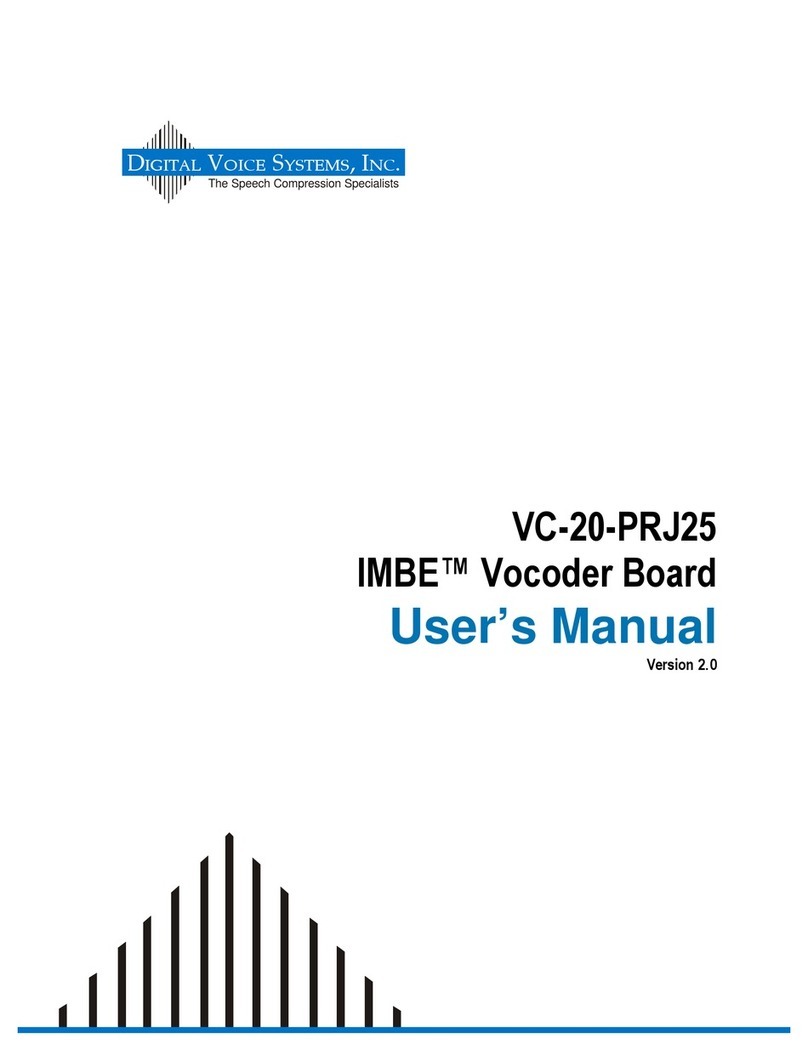
Digital Voice Systems
Digital Voice Systems VC-20-PRJ25 User manual

Digital Voice Systems
Digital Voice Systems AMBE-20X0 HDK User manual
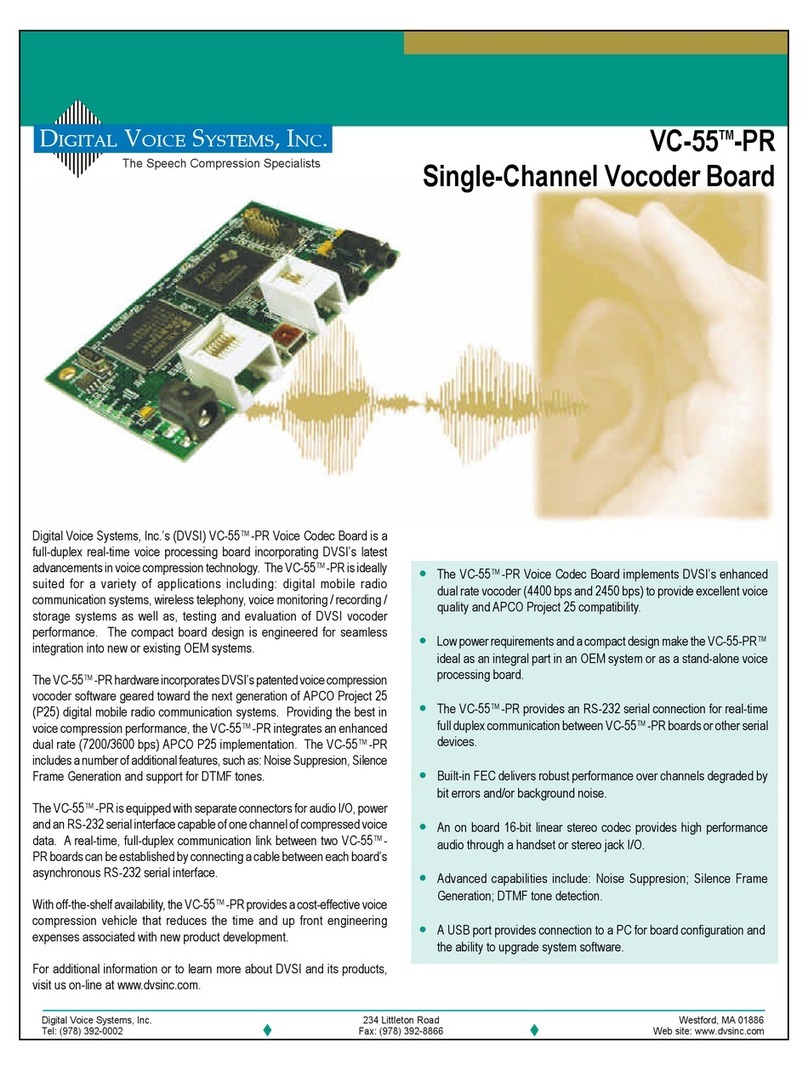
Digital Voice Systems
Digital Voice Systems VC-55-PR User manual
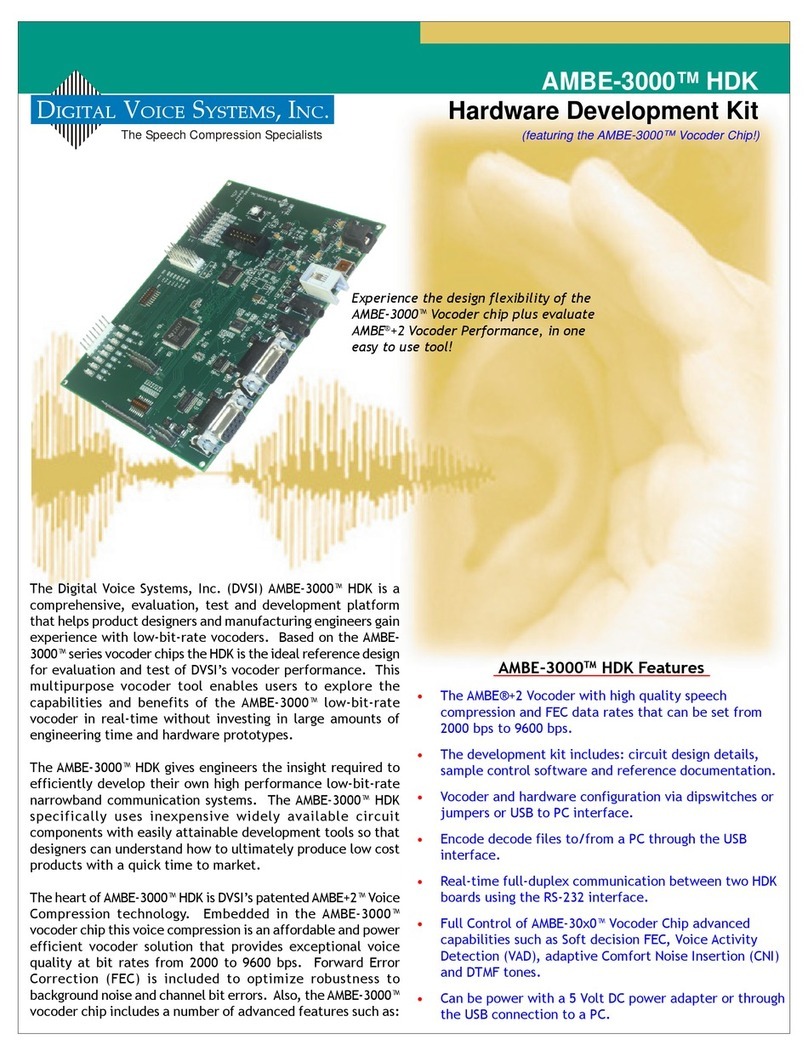
Digital Voice Systems
Digital Voice Systems AMBE-3000 HDK User manual

Digital Voice Systems
Digital Voice Systems VC-20-MR2 User manual

Digital Voice Systems
Digital Voice Systems VC-55-PR User manual

Digital Voice Systems
Digital Voice Systems AMBE-3000 HDK User manual
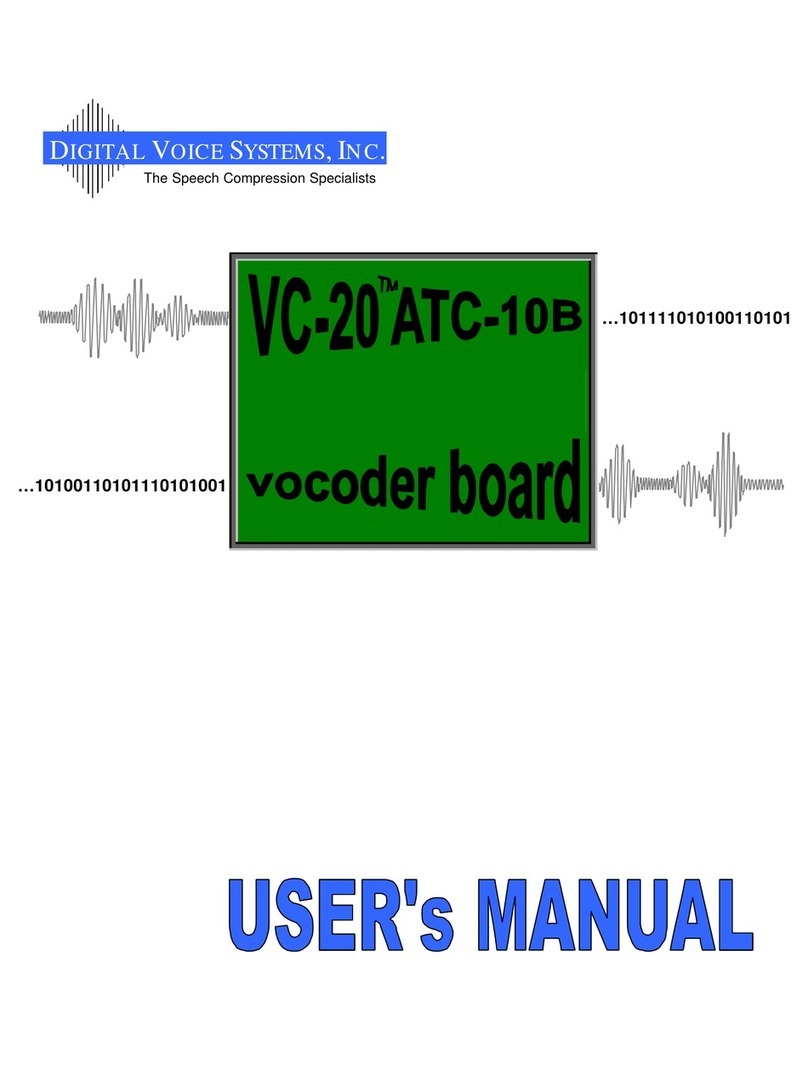
Digital Voice Systems
Digital Voice Systems VC-20-ATC-10B User manual
